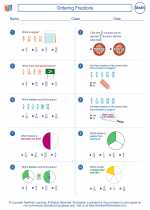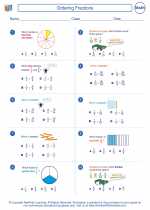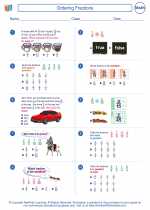Ordering Fractions -> ordering
Ordering Numbers
Ordering numbers is the process of arranging numbers in a specific sequence, either from the smallest to the largest (ascending order) or from the largest to the smallest (descending order).
Ascending Order
To order numbers in ascending order, you start with the smallest number and then proceed to the largest number.
Example:
Order the numbers 5, 2, 7, 4, and 9 in ascending order.
First, identify the smallest number, which is 2. Then, move on to the next smallest number, which is 4. Then, 5, 7, and 9. So, the numbers in ascending order are 2, 4, 5, 7, 9.
Descending Order
To order numbers in descending order, you start with the largest number and then proceed to the smallest number.
Example:
Order the numbers 12, 8, 15, 6, and 10 in descending order.
First, identify the largest number, which is 15. Then, move on to the next largest number, which is 12. Then, 10, 8, and 6. So, the numbers in descending order are 15, 12, 10, 8, 6.
Study Guide
When ordering numbers, remember the following steps:
- Identify the smallest (or largest) number in the given set of numbers.
- Continue to the next smallest (or largest) number until all numbers are ordered.
- For ascending order, start with the smallest number; for descending order, start with the largest number.
Practice ordering numbers using different sets of numbers and try both ascending and descending order to strengthen your understanding of the concept.
Remember, ordering numbers is an important skill that is used in various mathematical concepts and real-life situations, so mastering this skill is essential.
[Ordering] Related Worksheets and Study Guides:
.◂Math Worksheets and Study Guides Sixth Grade. Ordering Fractions

 Worksheet/Answer key
Worksheet/Answer key
 Worksheet/Answer key
Worksheet/Answer key
 Worksheet/Answer key
Worksheet/Answer key
 Worksheet/Answer key
Worksheet/Answer key
 Worksheet/Answer key
Worksheet/Answer key
 Worksheet/Answer key
Worksheet/Answer key
